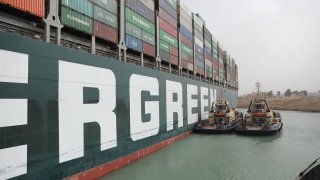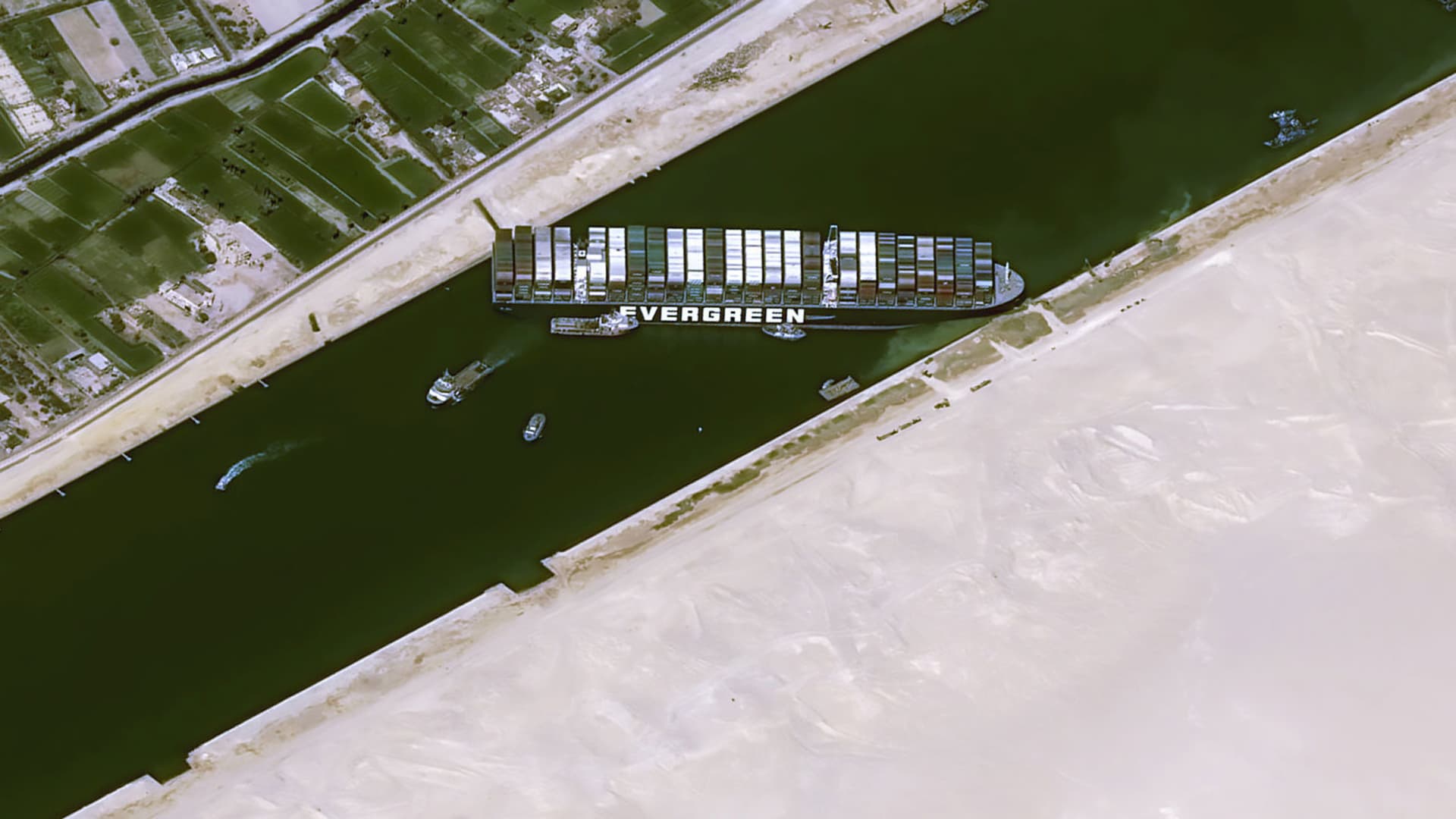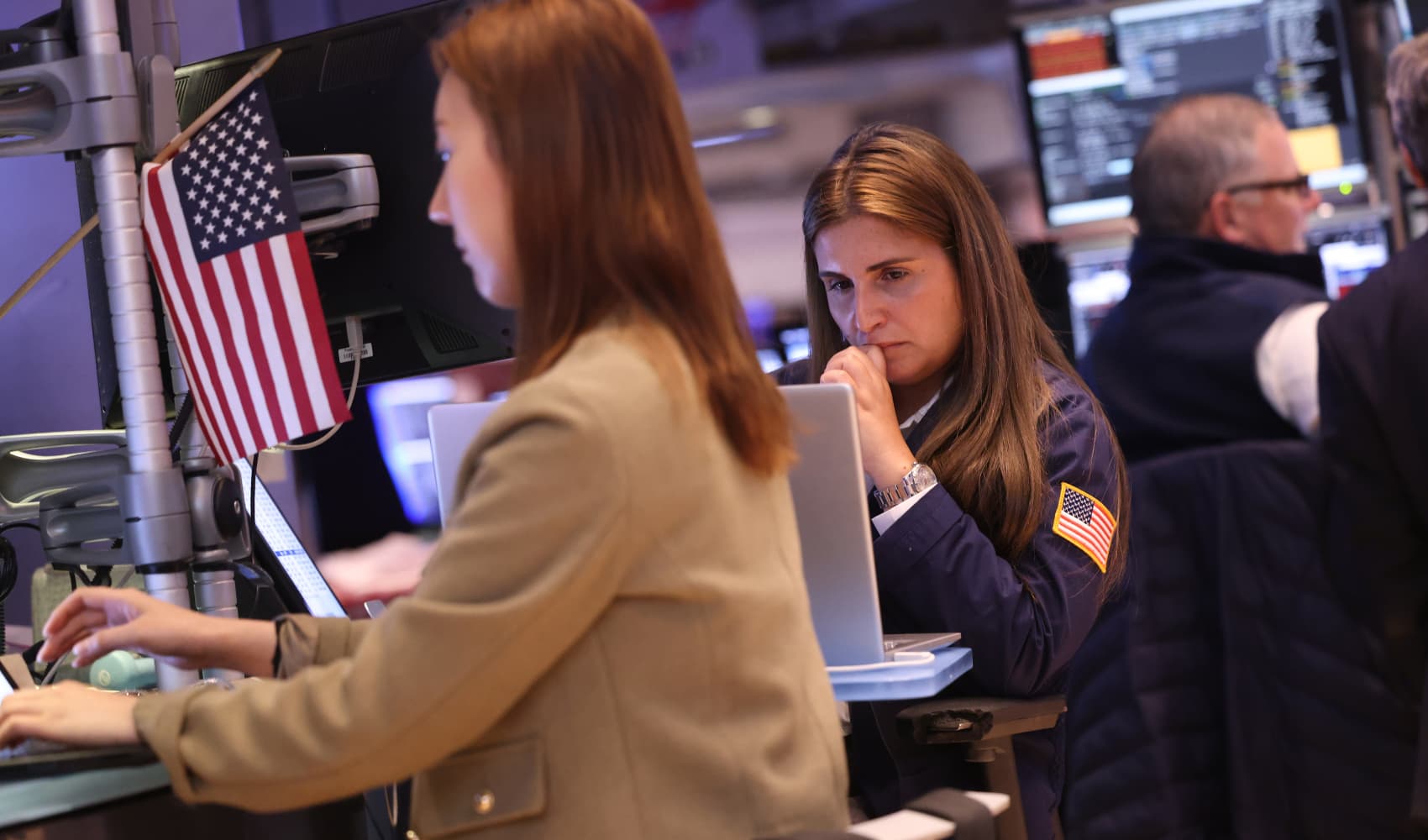
- Lloyd's List calculates blockage is costing $400 million an hour.
- Lloyd's values the canal's westbound traffic at roughly $5.1 billion a day, and eastbound traffic at around $4.5 billion a day.
- The blockage is further stressing an already strained supply chain.
The stranded mega-container vessel, Ever Given in the Suez Canal, is holding up an estimated $400 million an hour in trade, based on the approximate value of goods that are moved through the Suez every day, according to shipping data and news company Lloyd's List.
Lloyd's values the canal's westbound traffic at roughly $5.1 billion a day, and eastbound traffic at around $4.5 billion a day. The blockage is further stressing an already strained supply chain, said Jon Gold, vice president of supply chain and customs policy for the National Retail Federation.
We're making it easier for you to find stories that matter with our new newsletter — The 4Front. Sign up here and get news that is important for you to your inbox.
"Every day that the vessel remains wedged across the canal adds delays to normal cargo flows," he said, adding that the trade group's members are actively working with carriers to monitor the situation and determine the best mitigation strategies. "Many companies continue to struggle with supply chain congestion and delays stemming from the pandemic. There is no doubt the delays will ripple through the supply chain and cause additional challenges."

The Suez Canal, which separates Africa from Asia, is one of the busiest trade routes in the world, with approximately 12% of total global trade moving through it. Energy exports like liquified natural gas, Crude oil, and refined oil make up 5% to 10% of global shipments. The rest of the traffic is largely consumer products ranging from fire pits to clothing, furniture, manufacturing, auto parts and exercise equipment.
Money Report
"The key to this problem hinges on how much longer it will take to move the Ever Given," explained Alan Baer, President of logistics provider, OL USA LLC. "USA importers face arrival delays of three days right now and this will continue to grow as long as the disruption continues."
Horn of Africa
The Suez has provided some relief for global importers as they increasingly relied on it last year to avoid massive congestion at West Coast ports in the U.S. that added days, if not weeks, to some deliveries coming from Asia.
Baer, who has containers on vessels stuck in both lanes of the Suez Canal, said if it stays closed, vessels will be diverted and go around the horn of Africa, which adds an additional seven to nine days to a trip.
According to BIMCO, the largest of the international shipping associations representing shipowners, the bottleneck will only continue to grow and impact supplies.
"Everyone is making contingency plans as we speak," said Peter Sand, chief shipping analyst at BIMCO.

"Carriers run a third of their Asia trade strings to the U.S. East Coast via the Suez and two-thirds via Panama Canal," said Baer. "Disruption is also hitting the import trade from India as well as the Middle East."
Clearing the backlog
According to the World Shipping Council, the Suez canal's daily vessel throughput capacity is 106. If the canal is closed for two days, it will then take two additional days after re-opening to clear the backlog. The longer the delay, the longer it will take to move out the vessels.
Lars Jensen, CEO of Sea Intelligence Consulting, tells CNBC the schedule reliability for container vessels is already in disarray as a result of the pandemic.
"Right now two out of three container vessels arrive late," he explained. "And when they are late, they are on average five days late," he said, adding that a two-day delay isn't a major problem. "However, the longer this drags out, the worse it gets because you are then talking about effectively removing vessel capacity as well as containers at a point in time where they are already in short supply."
Inventory impact
In addition to delaying thousands of containers loaded with consumer items, the stranded ship has also tied up empty containers, which are key for Chinese exports.
"Containers are already scarce in China and the backup in the Suez will further stress the inventory," explained Jon Monroe, maritime trade and logistics consultant with Jon Monroe Consulting. "We are back to a pre-Chinese New Year environment where factories are running at full steam and are struggling to find containers as well as space for their finished goods."
This delay will impact the arrival of U.S. imports that fill store shelves as well as U.S. manufacturing components.
"Before the Suez Canal disruption, we were expecting the container situation to get worse in April because we were already seeing the scarcity of containers," said Monroe. "This canal closure will not help. You will start to see product piling up on factory floors."
Consumer demand
Chinese manufacturers are responding to the tremendous global orders for their goods. Pandemic lockdowns have fueled consumer demand over the last year. As a result, a continuous historic flow of vessels holding millions of containers is clogging ports and slowing down processing. The delays have been costly.
Nike along with retailers Crocs, Gap, Peloton, Footlocker, Five Below, William Sonoma, Steve Madden, Whirlpool, Urban Outfitters, and Tesla all cited supply chain problems impacting their business this quarter.
Brian Bourke, Chief Growth Officer of SEKO Logistics tells CNBC, the blockage is creating the perfect storm for retailers who are struggling to restock.
"The timing of this could not be worse," he said. "You have stimulus checks going into the hands of consumers. After every stimulus check, we have seen a huge surge in product volume. We are talking to businesses that are running out of inventory. How can you have a stimulus if you can't buy anything? Your wait for your couch can be longer than three months."






